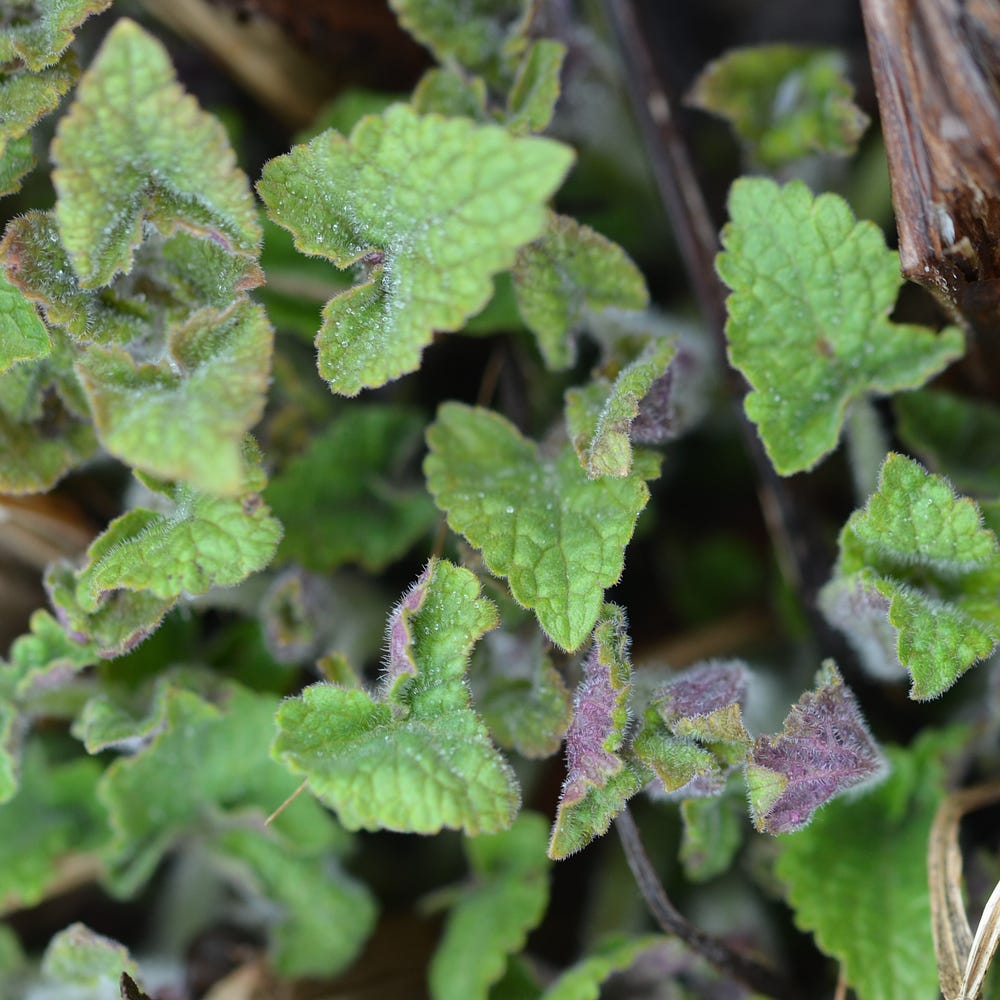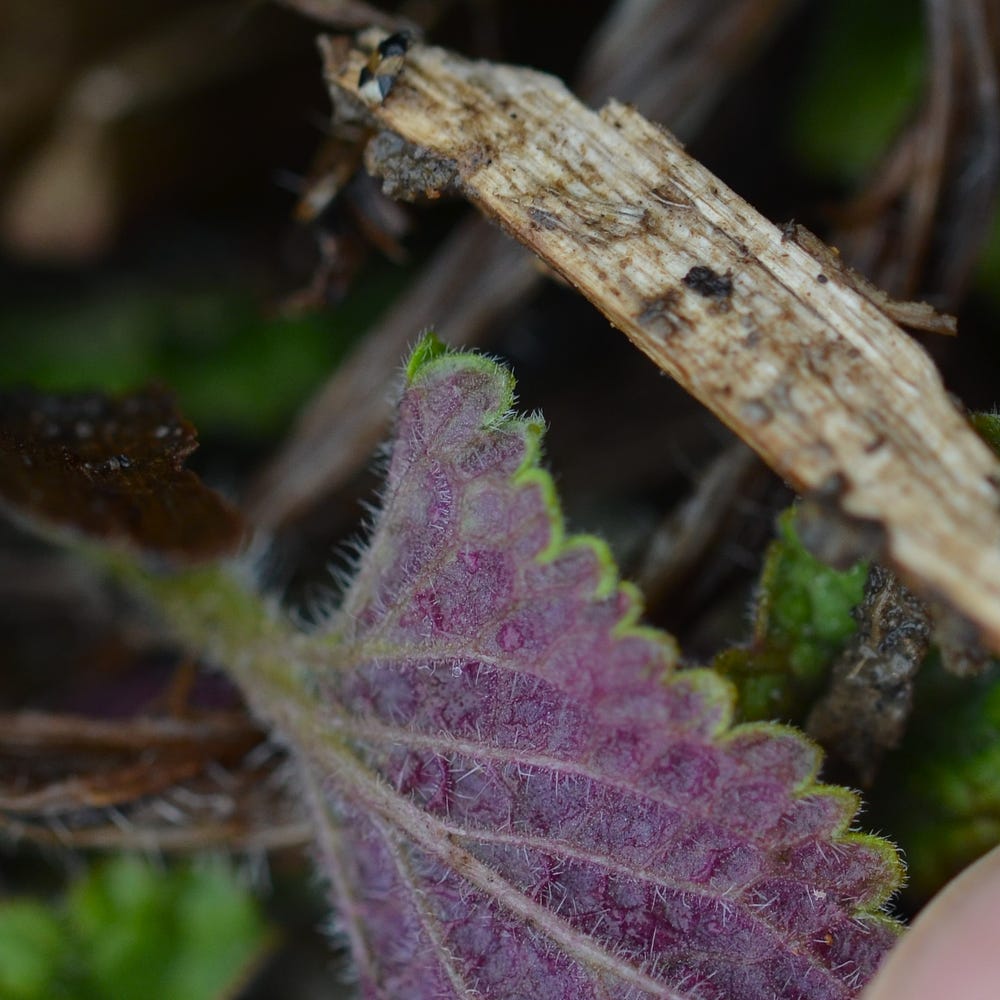Notes
Our Giant Anise Hyssop (Agastache foeniculum) plants are beginning to wake up and leaf out.
The main stalks of this plant were over 8 feet tall last year and so now the hollow stems of last year’s dried stalks will be ideal for cutting into cross sections and tying together to serve as ideal cavities for ladybugs and solitary bees to nest and overwinter.
The genetics of these plants are fantastically adaptable and resilient. In response to the minus 5 Celsius nights we had last week the new leaves decided to produce high concentrations of anthocyanins on the bottom of the leaves.
(For more info on anthocyanins: gavinmounsey.substack.com/p/the-auspici…
The top of the leaf is remaining higher in chlorophyll to maximize photosynthesis given how few leaves have emerged but the bottom has the anthocyanins in the veins to protect the flow of sap, minerals and nutrients.
I saved these seeds from wild plants growing on the edge of where the hard wood forests of southern Ontario begin to transition into Boreal Forest. I am never disappointed when I team up with Mother Nature in selecting the strongest and most resilient seeds for medicinal plants :)




Dive into your interests
We'll recommend top publications based on the topics you select.
